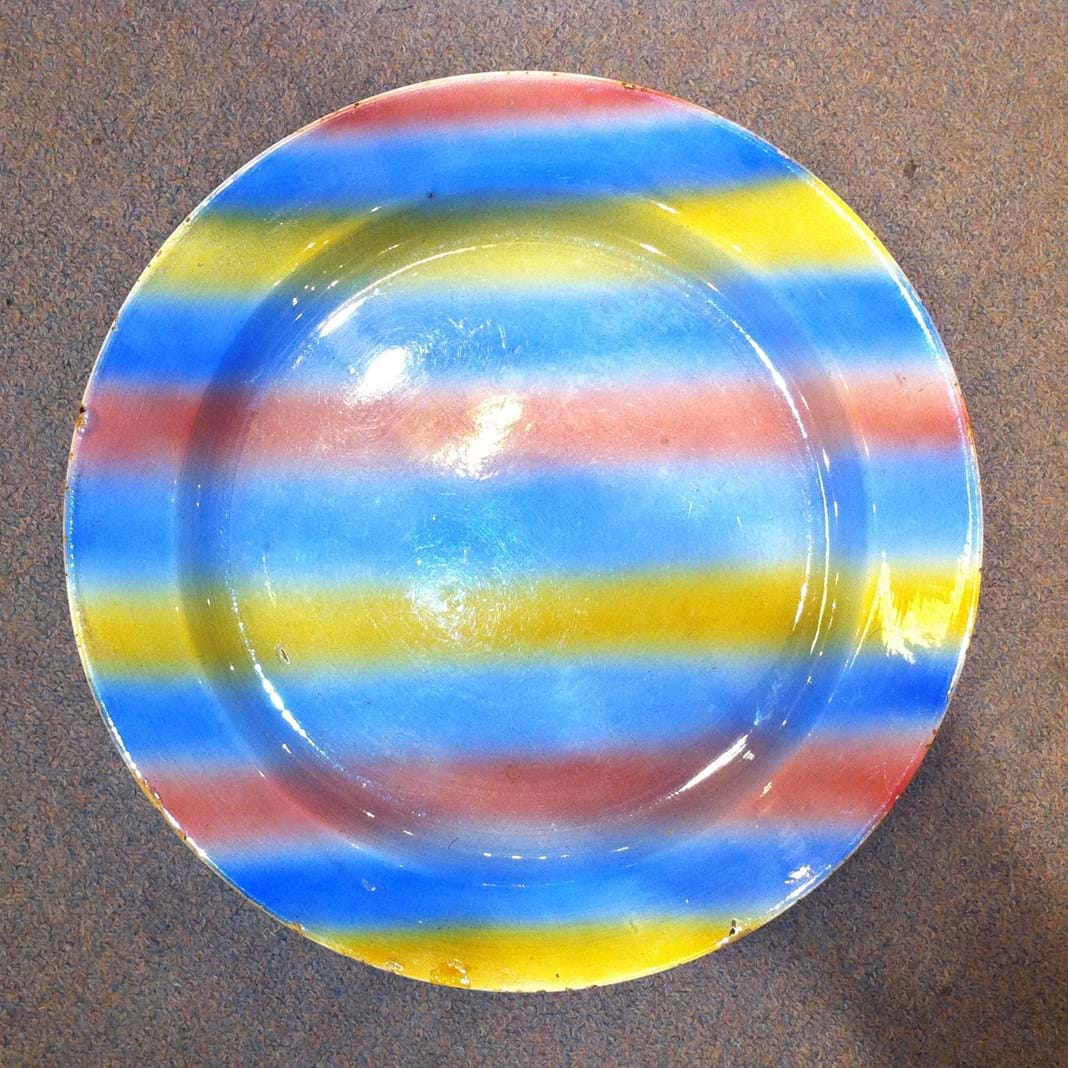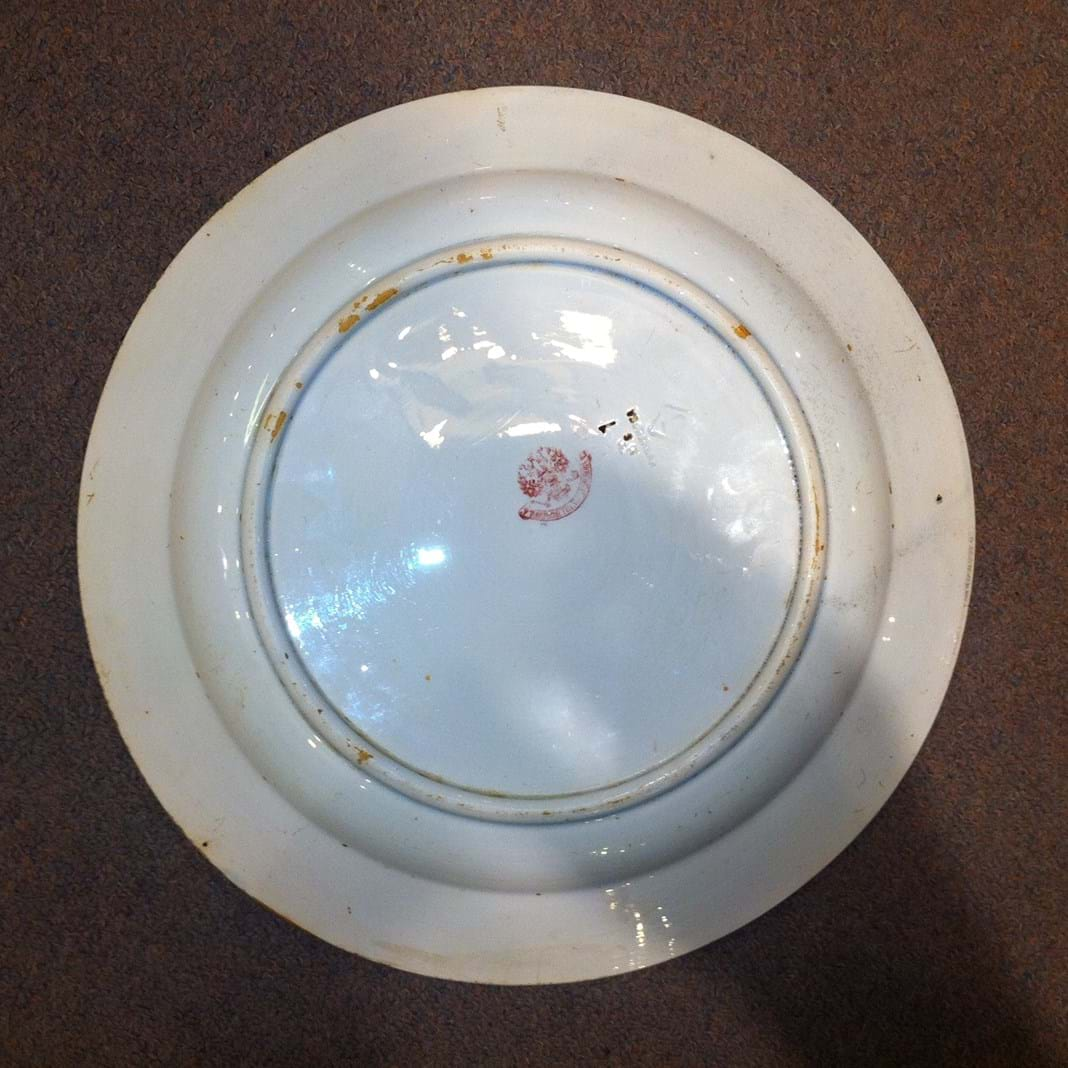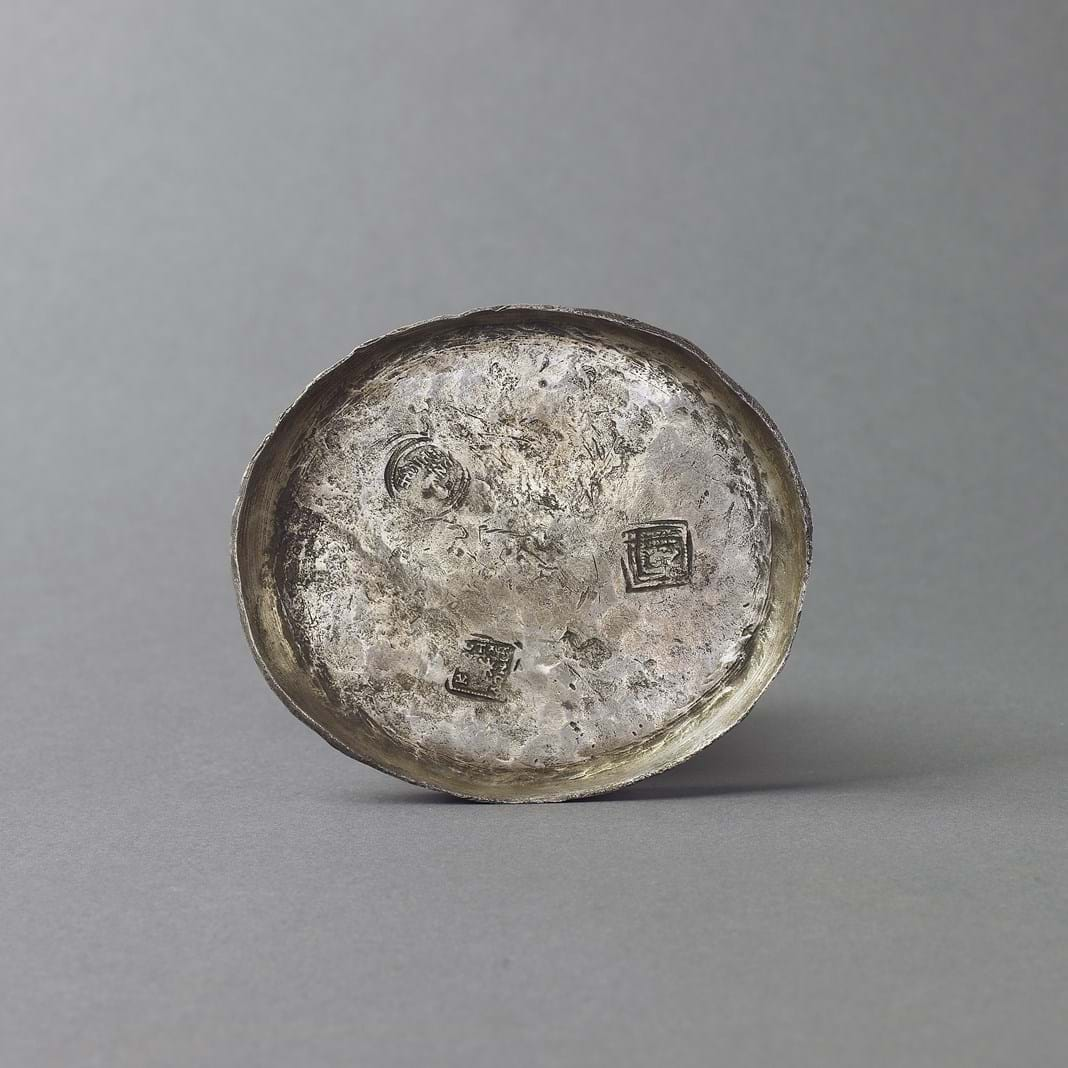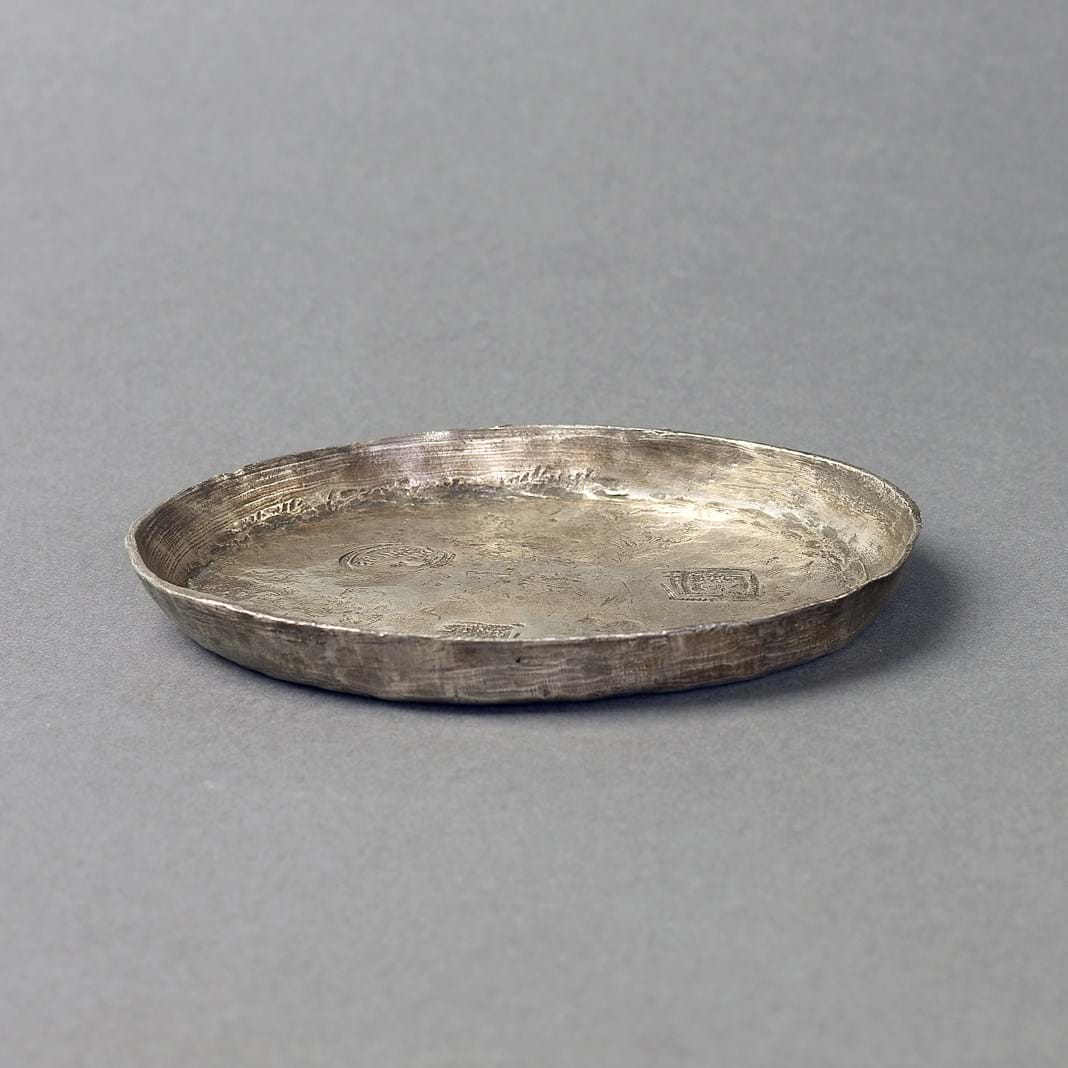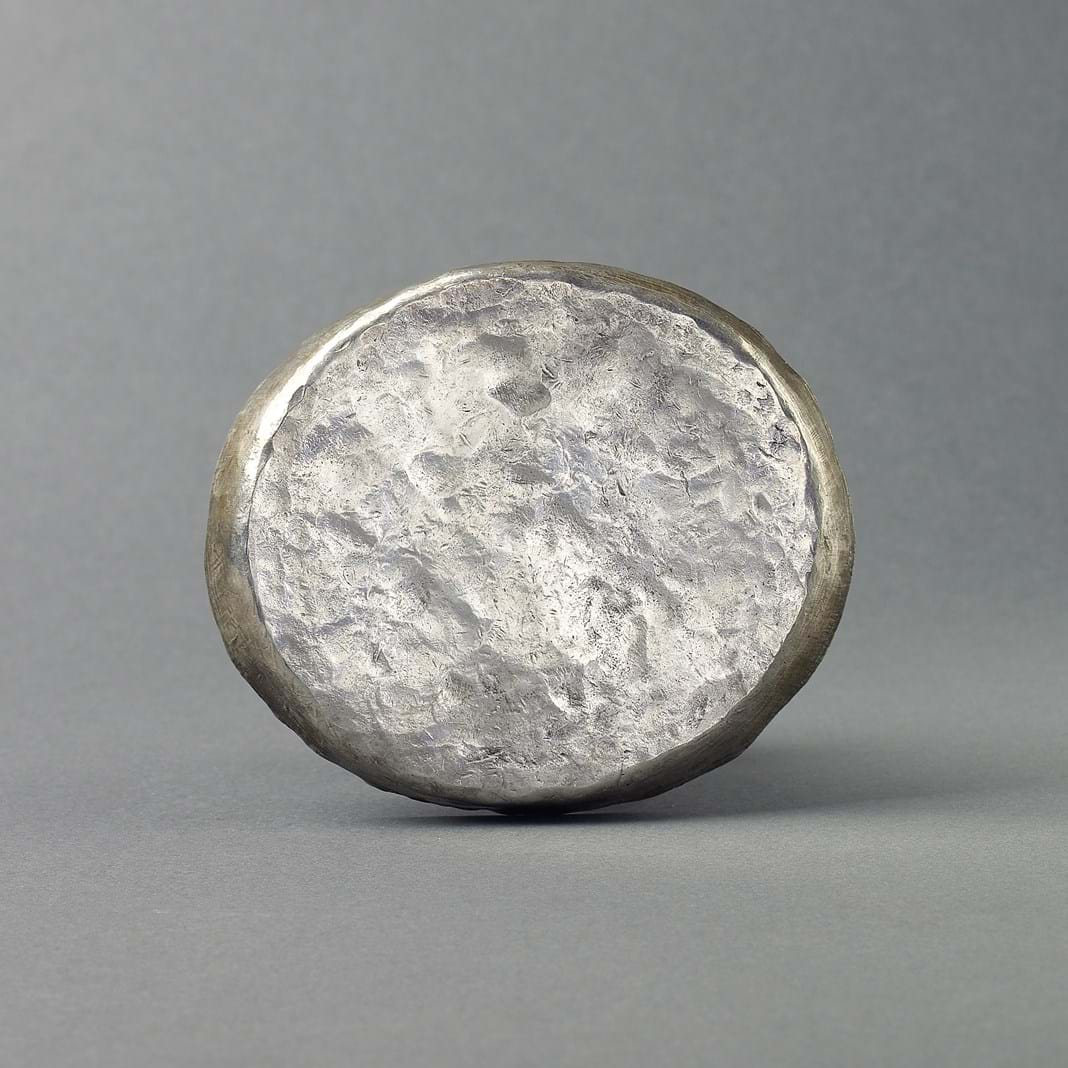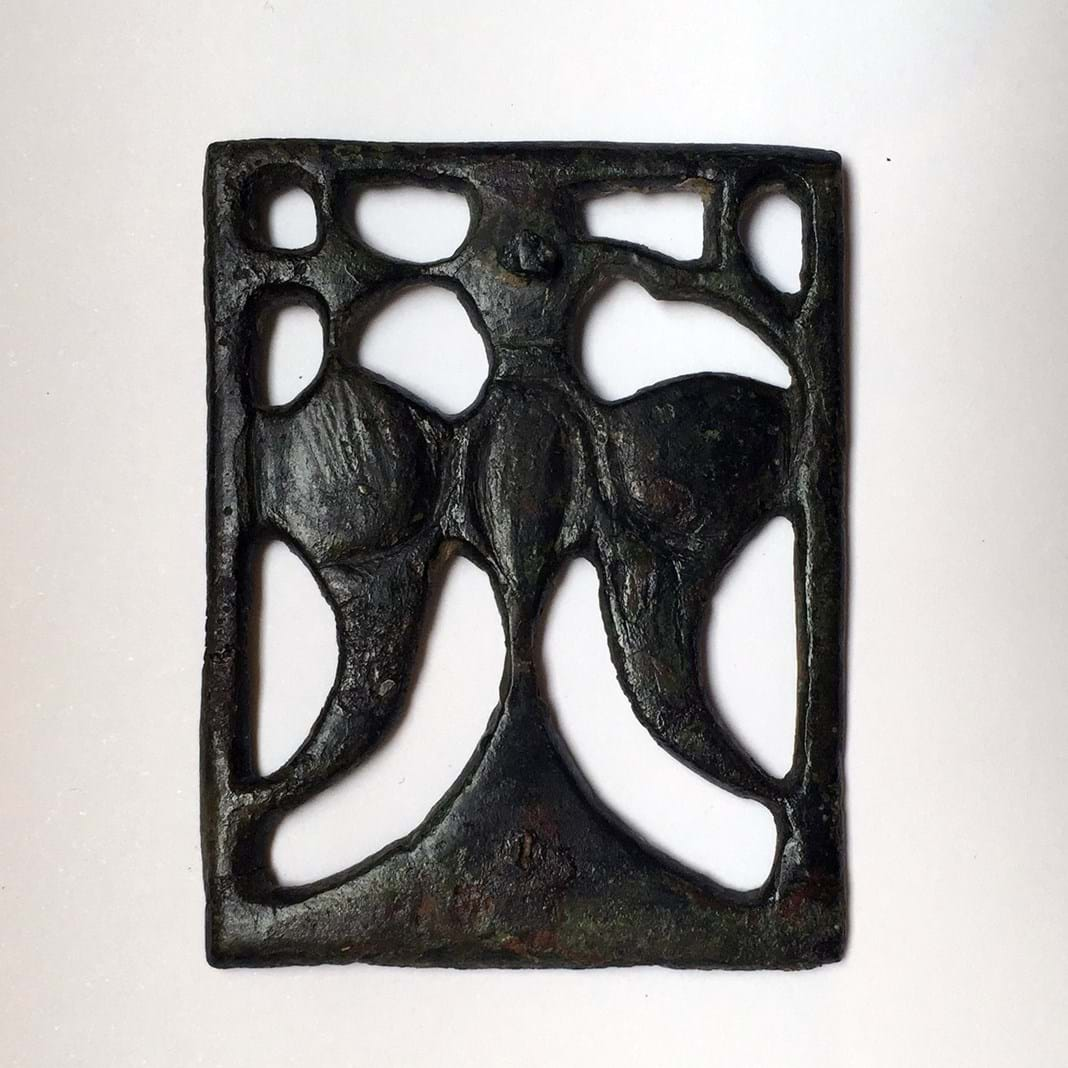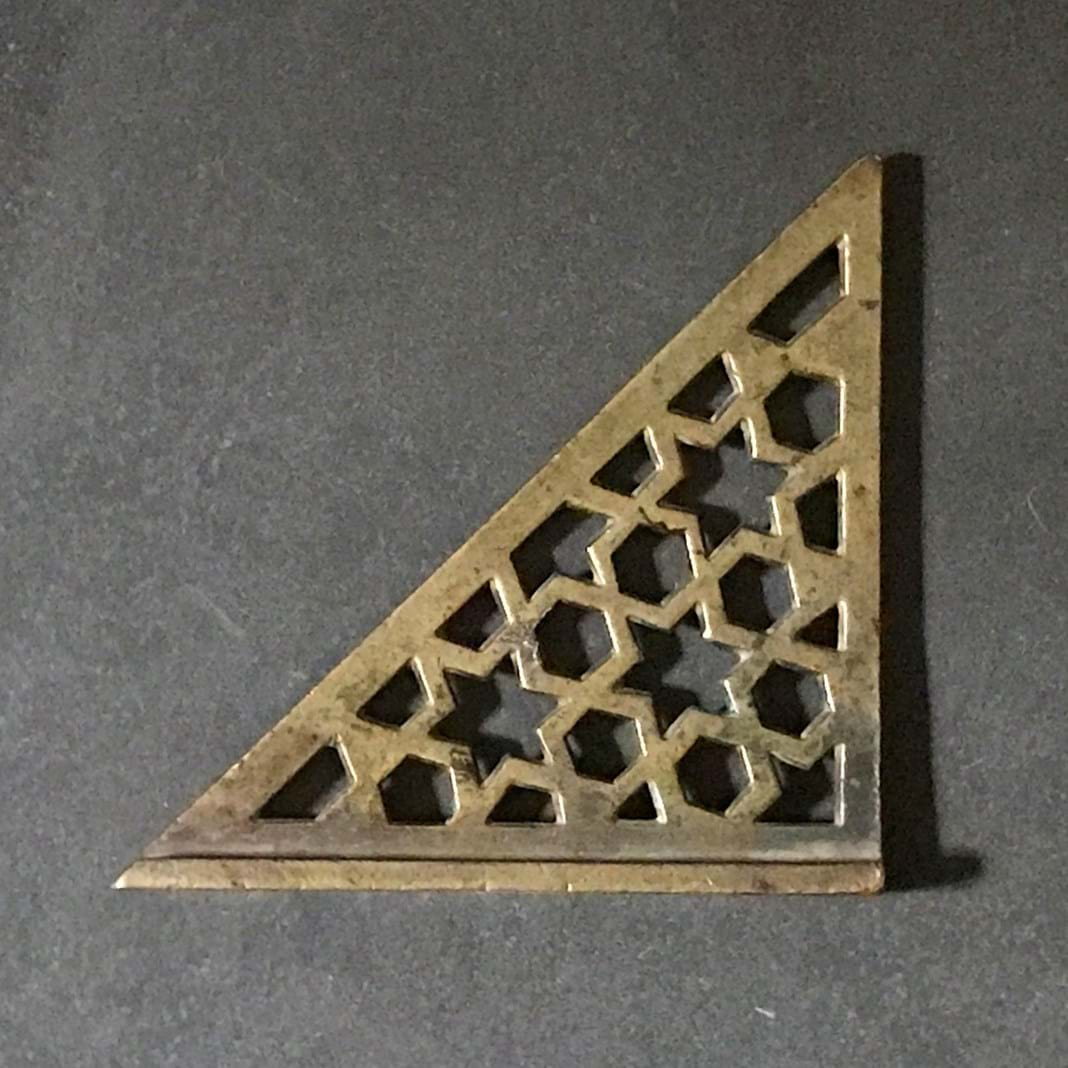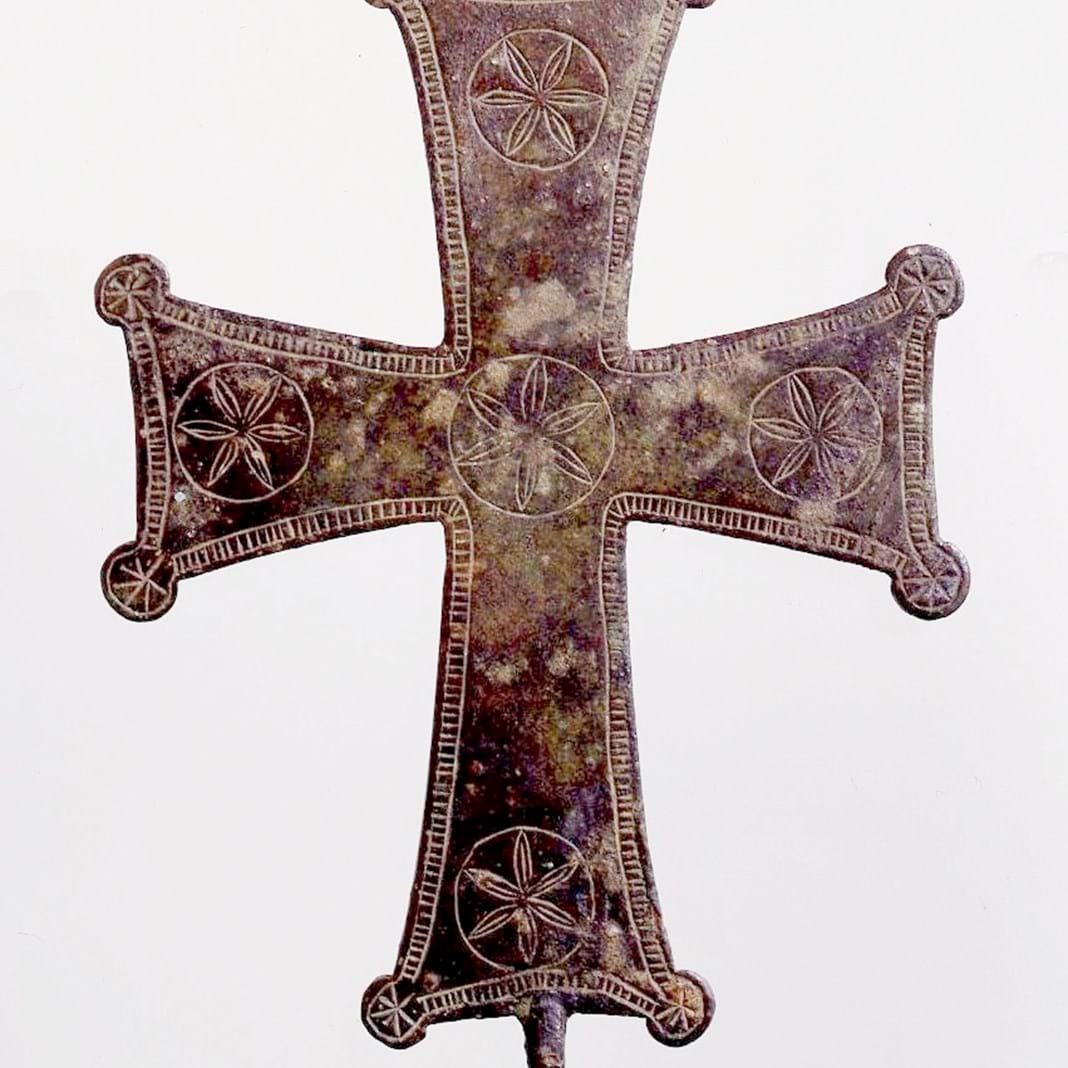'Ikat' series porcelain charger
Originally made for the Emir of Bukhara by the Kuznetsov Porcelain Factory in Russia, the centre and rim with blue, yellow and pink stripes
Origin
Russia
Date
1880-1900
Diameter: 32.5 cm
£ 850
Byzantine dish-shaped silver ingot
Roughly chiselled and hammered into the shape of a shallow oval dish, this piece of silver bullion bears three control stamps; one round and two rectangular.
Comments
The stamps on this piece are markedly different from those found on objects from Constantinople, indicating that the object originated from another centre of the Byzantine empire.
One of the three stamps bears a portrait showing an emperor without a halo. Comparing it to the tables in ECD (Erica Cruikshank Dodd, Byzantine Silver Stamps, Dumbarton Oaks Studies Seven, Washington DC, 1961), he must be either Heraclius (r. 613 – 641 AD), or Constans II (r. 641 – 651/2 AD)
This dating to the 7th century is corroborated by the two names on the other stamps:
SERGIUS—in Latin. See ECD Nos. 71 – 73 from Heraclius’ reign, and Nos. 75 – 77 from the reign of Constans II
KONSTANTINOS—in Greek. See ECD No. 96 (stamped in Latin) also dated to the 7th century
As to the origin of this silver ingot, we can exclude the Empire’s South, since by the 7th century the Byzantines had lost control of its great centres of population and commerce. And given that the piece is said to have been found on the north coast of the Black Sea, the most likely origin for it would have been Cherson, a thriving commercial centre with the administrative capability for the assaying of silver. This tentative attribution is reinforced by the fact that a number of items found in that general region bear stamps with a rosette or Christogram. The star on one of the three stamps on this piece could perhaps be a simplified form of these.
Origin
Northern coast of the Black sea, modern Ukraine
Date
7th century AD
Height: 11.5 cm
Width: 13.5 cm
Weight: 310 g, i.e., almost a full Byzantine lb (324-319g)
Provenance
TS Collection, London
£ 8,750
Ayyubid rectangular plaque with an eagle in openwork
Made of cast brass with two fixing holes indicating this decorative element was intended for attachment onto a wooden or metal surface.
Origin
Syria or Egypt
Date
Ayyubid period, 12th-13th century
Height: 6.1 cm
Width: 4.8 cm
Provenance
Sotheby's, London, 19/10/1983, lot 28
Acquired there by AXIA
Exhibited / Published
An almost identical plaque measuring 6.8 x 4.7 cm was sold at auction in Paris (Art Curial, 01/12/2014, lot 29) for EUR 1,560
£ 350
Ottoman carpenter’s or mason’s ‘Square’
Of cast brass with an openwork pattern of hexagons and six-pointed stars. It is in the form of a 45 degree isosceles triangle with a flange protruding under one the short sides to enable the craftsman to run it along the edge of a wooden board or stone slab in order to mark on it a 45 or 90 degree angle. Under the name of ‘Speed Square’, this same tool is still in wide use by the building trade in the West today.
Origin
Ottoman Turkey, Istanbul
Date
15th-17th century
Size / Dimensions
Measurements of the 'Square' not including the base flange: 17.3 cm (sides); 24.4 cm (hypotenuse)
Provenance
Private collection, UK
£ 1,000
Byzantine portable cross
Of the patée type on account of the small discs (paws) at the corners of its flaring arms, the cross is made of cast brass and engraved with roundels containing six-petalled flowers. Ornaments of this type are commonly found in early Christian silverware and architectural decoration. At the base, the remaining part of a small flange, or tang, indicates that this small cross was probably once fixed to a handle as a portable item of personal devotion.
Origin
Asia Minor, probably Cappadocia
Date
5th-7th century AD
Height: 14 cm
Width: 10.5 cm
Provenance
Private collection, Munich
Exhibited / Published
East Christian Art, London 1987, cat. no. 30
£ 950
